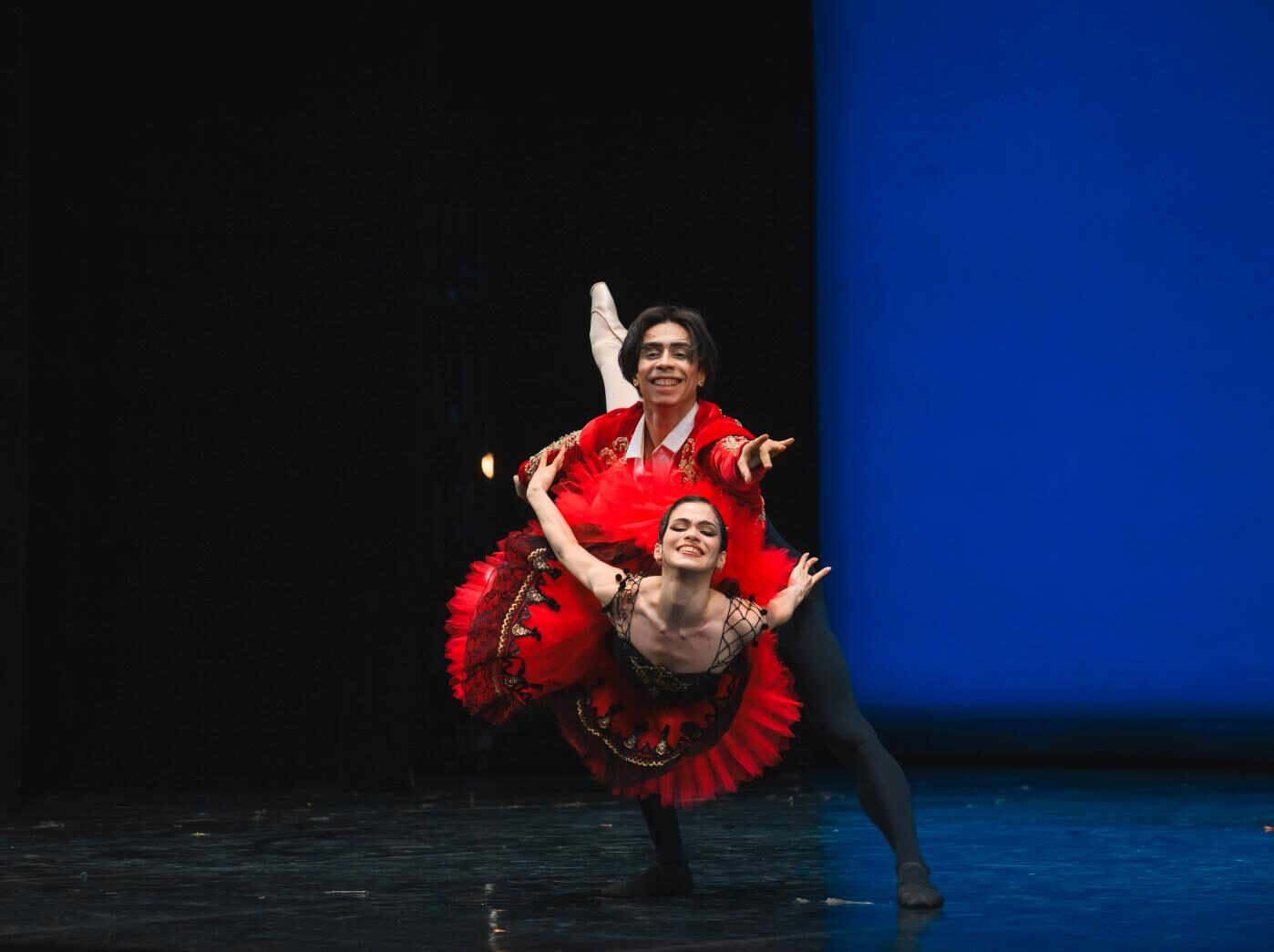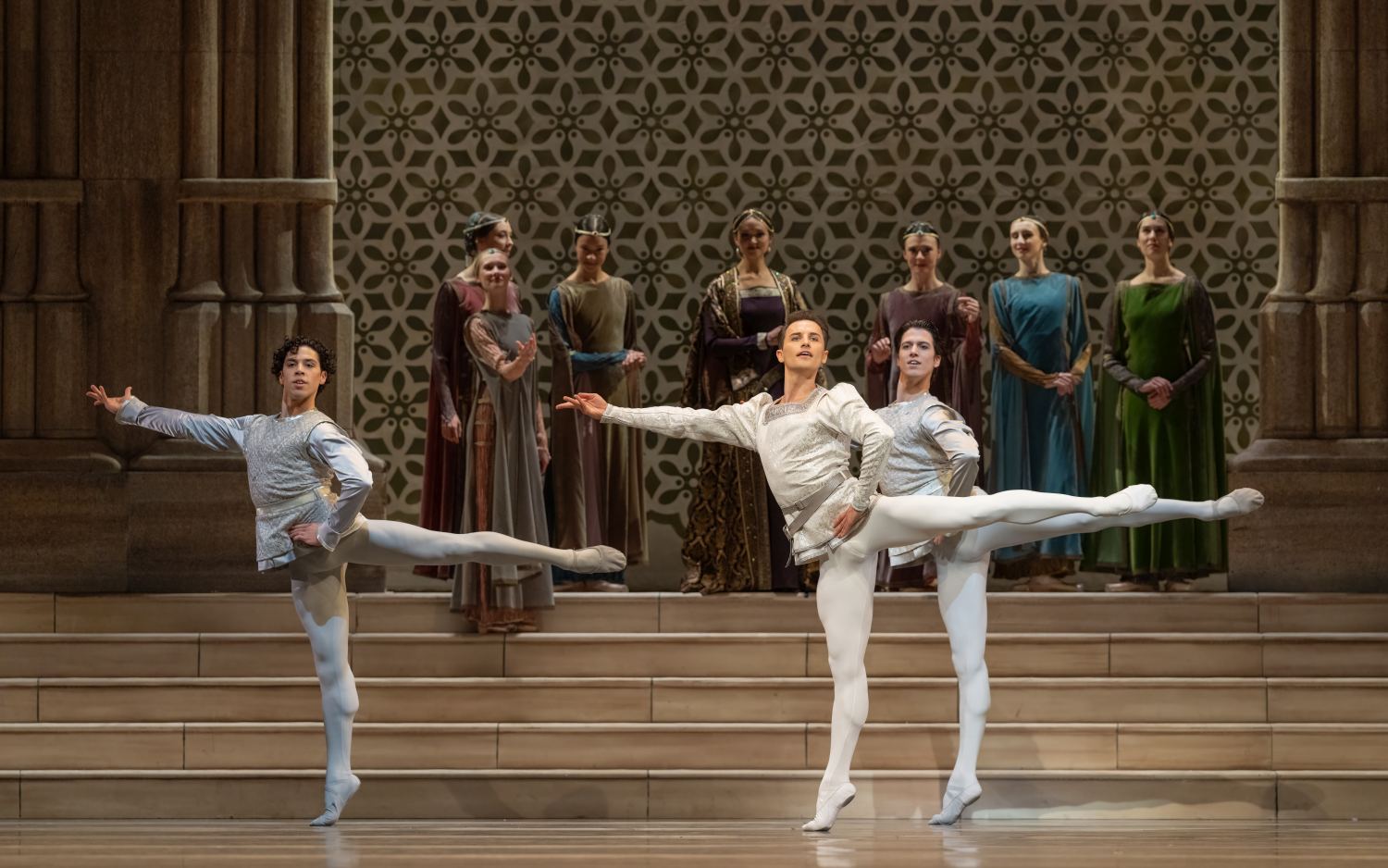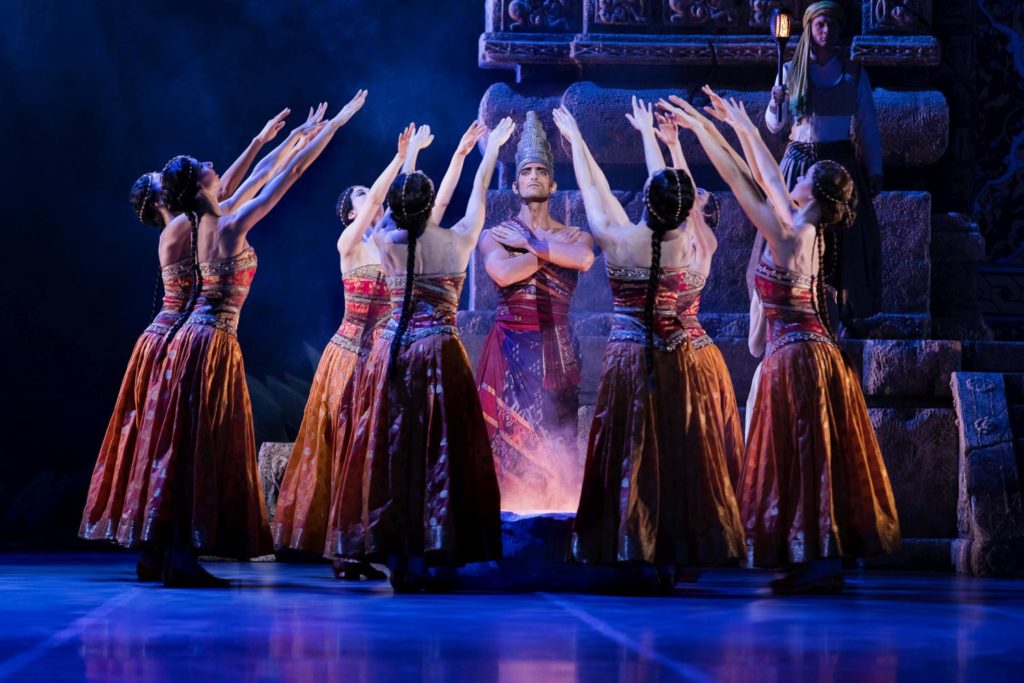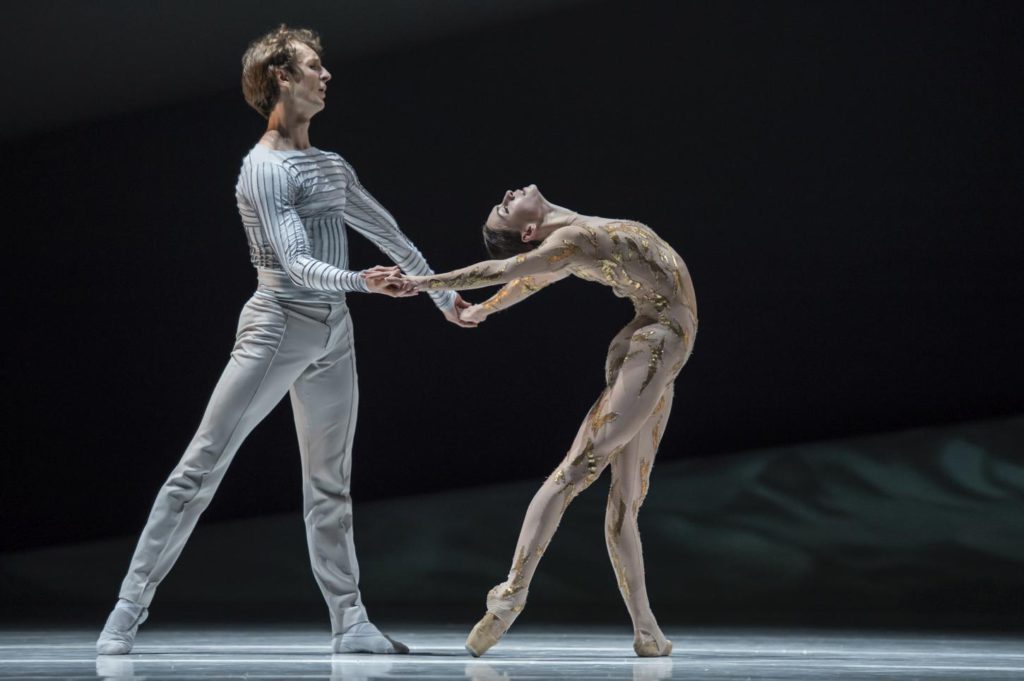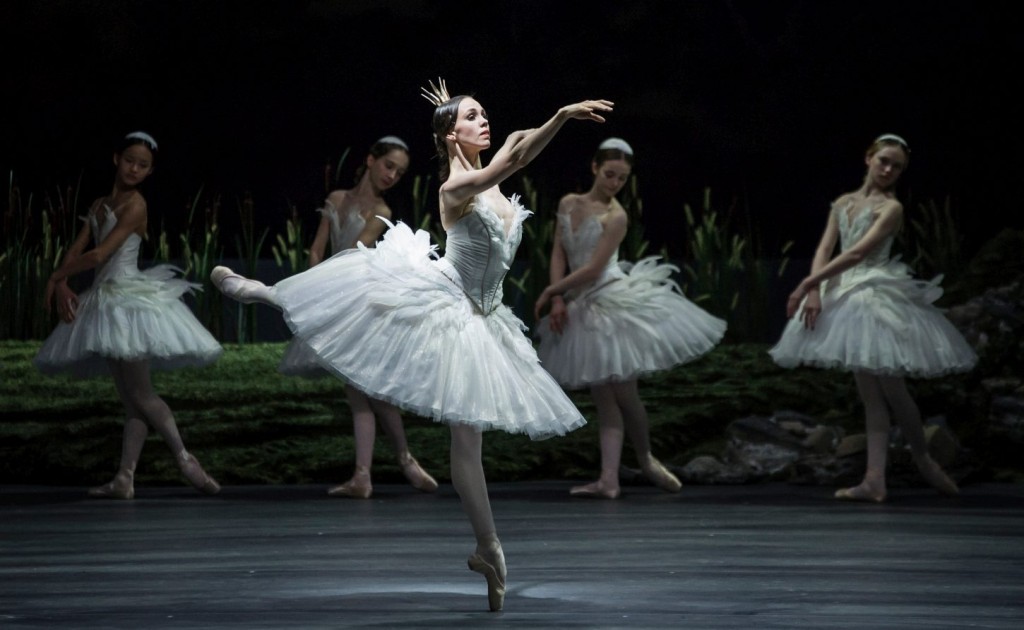Homage to Rainier III, Prince of Monaco
“Soirée Maurice Ravel” (“La Valse”/“L’Enfant et les Sortilèges”)
Les Ballets de Monte-Carlo
Salle des Princes, Grimaldi Forum
Monte-Carlo, Monaco
December 23, 2023
by Ilona Landgraf
Copyright © 2023 by Ilona Landgraf
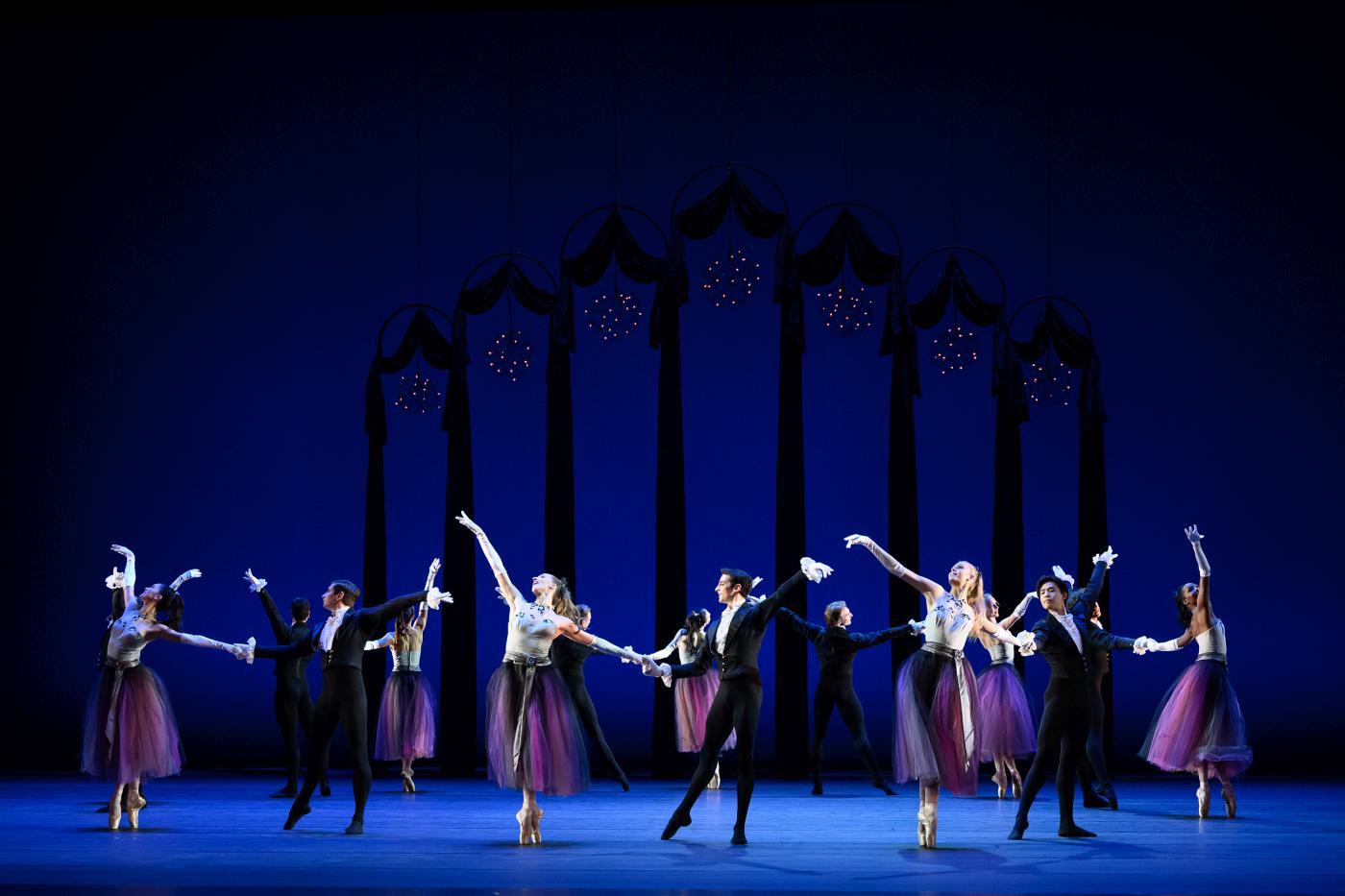 This year, Monaco celebrated the centenary anniversary of Prince Rainier III (1923–2005), the Principality’s monarch and head of state for almost 56 years. One highlight among the numerous events and exhibitions was a new double bill of Les Ballets de Monte-Carlo, featuring Balanchine’s La Valse and the company’s artistic director, Jean-Christophe Maillot’s L’Enfant et les Sortilèges (The Child and the Spell). Both pieces are set to music by Maurice Ravel. L’Enfant et les Sortilèges is a one-act opera with a libretto by Colette whose 150th anniversary happens to be celebrated this year. World War I delayed its premiere at the Monte-Carlo Opera until 1925. Back then, Balanchine choreographed the dance sequences. In 1992, Maillot created his adaption. As a tribute to Prince Rainier – who is said to have loved Ravel’s music in general and especially L’Enfant et les Sortilèges – he presented a new version this year. There were only four performances scheduled at the Grimaldi Forum, and I saw the last one on December 23rd. It was attended by Prince Albert II, Princess Caroline, and Princess Stéphanie and opened with Monaco’s anthem. (more…)
This year, Monaco celebrated the centenary anniversary of Prince Rainier III (1923–2005), the Principality’s monarch and head of state for almost 56 years. One highlight among the numerous events and exhibitions was a new double bill of Les Ballets de Monte-Carlo, featuring Balanchine’s La Valse and the company’s artistic director, Jean-Christophe Maillot’s L’Enfant et les Sortilèges (The Child and the Spell). Both pieces are set to music by Maurice Ravel. L’Enfant et les Sortilèges is a one-act opera with a libretto by Colette whose 150th anniversary happens to be celebrated this year. World War I delayed its premiere at the Monte-Carlo Opera until 1925. Back then, Balanchine choreographed the dance sequences. In 1992, Maillot created his adaption. As a tribute to Prince Rainier – who is said to have loved Ravel’s music in general and especially L’Enfant et les Sortilèges – he presented a new version this year. There were only four performances scheduled at the Grimaldi Forum, and I saw the last one on December 23rd. It was attended by Prince Albert II, Princess Caroline, and Princess Stéphanie and opened with Monaco’s anthem. (more…)
